Dr. Godwin Roger Constantine combines in himself a dedication to the health of the human heart and an intense passion for art. The Sri Lankan heart specialist is also an artist of repute.
A polymath his interests span diverse fields including literature, philosophy and sociology. He sees art as a way of responding to the socio-cultural context he lives in. Though involved in drawing and painting, he finds installations and performance art to be more conducive for expressing his “innermost person”.
Subscribe to our Telegram channel for the latest updates from around the world
Here are excerpts from an interview he gave to www.artamout.in
When did you decide and what prompted you to become an artist? Please give a brief account of your challenges and struggles in your journey as an artist. Any role models?
GRC: I became conscious of my interest in art when I was about seven years old. It was my art teacher at school, Mr Stanly Peiris, who persuaded my father to send me to an extra-curricular art class which prepared students for the Royal Society of Art examinations. My father was a photographer and he saw that I was interested in art and happily enrolled me for that class. Since then I have been drawing and painting whenever I’ve found the time.
During my school days I was fascinated by the distortions I saw in modern paintings. I can remember asking a few art teachers at school about the meaning of modern art, but I never received satisfactory answers from them. Almost all the art teachers at that time were trained teachers without much theoretical knowledge of art and art history and none of them were practising artists.
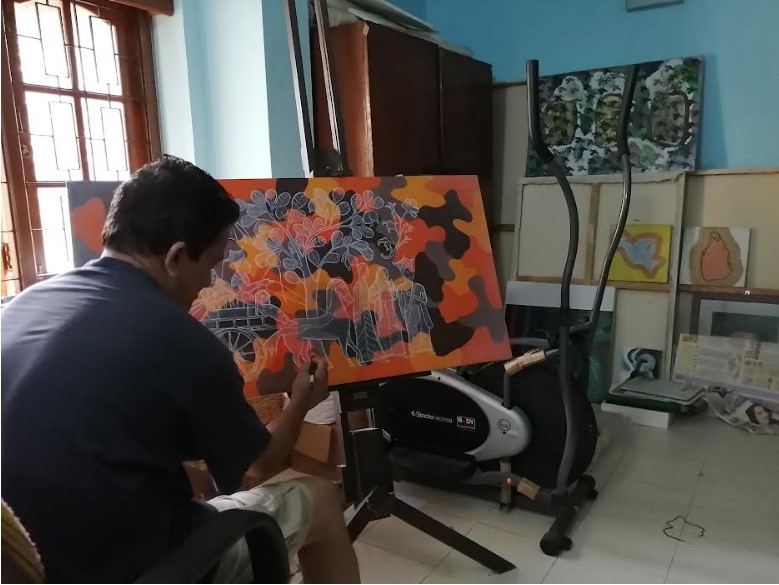
As a young undergraduate student I came across two important books on art that changed my entire perspective on art. One was Arts and Ideas by William Fleming and the other was The Short History of Art by Ernest Gumbrich. During this time I started studying art from a famous artist from Jaffna, Mr A. Mark or Mark Master, as we called him. He introduced me to modern art and inspired me to look at things in a different light. Though I was a medical student at that time I would visit his studio four to five times a week to study art and work with him. It is under Mark Master that I learned that by merely learning to draw and paint one cannot become an artist. This experience opened up a new world of possibilities in art.
The ethnic conflict in Sri Lanka has had a great impact on my life since the late 1970s. My family was displaced from Kandy to Jaffna due to the 1977 ethnic riots. Since that time tension was gradually building up in the entire country, especially in the Tamil-speaking areas – the northern and eastern parts of Sri Lanka. My first day in the university was marked by a protest march against an arrest of a university student. It was the beginning of a very turbulent period in our history.
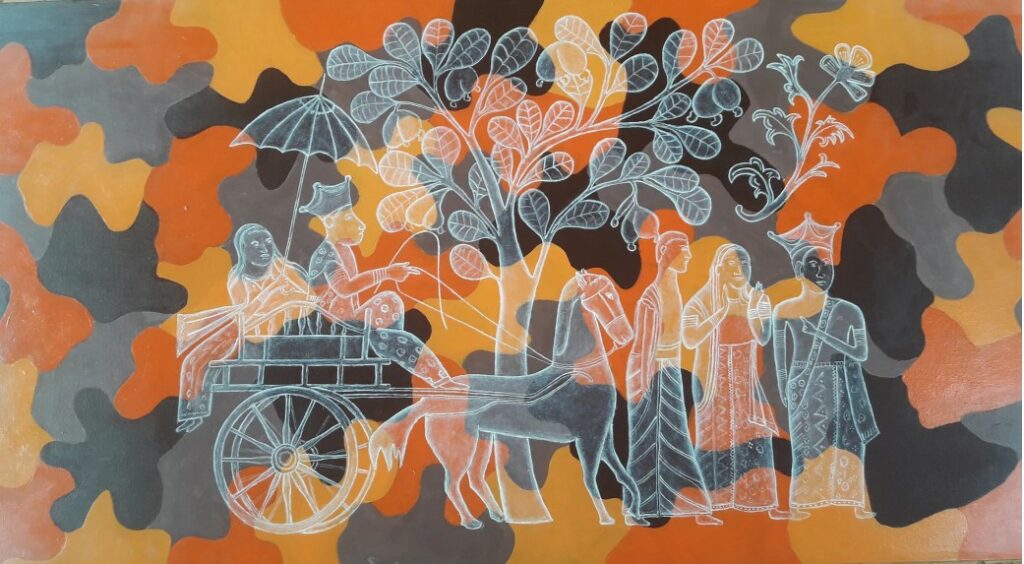
As university students we were very involved in socio-political issues of the time, the events that occurred in Sri Lanka made a great impact on me. During this period we had long gaps in our university learning due to the political unrest. This gave me ample time to study art.
After graduation in 1991 I moved to Colombo, which was like another displacement. Being in Jaffna from 1977 to 1991 had given me a deep sense of community and ethnic identity. Being a Tamil, Jaffna provided me an environment of collective experience – the hardships, dangers and discrimination were all collective. When there was bombing everyone ran for cover; when the Sri Lankan or Indian army walked into a place everyone trembled, not knowing what will happen. In this I never felt alone – the common enemy or the peril was known in the community. This situation forced you to be a part of the community whether you liked it or not. When you are forced out of your “comfort zone” and become a refugee, life changes completely. But in that situation you do not realize the change, you become part of the new environment and carry on doing whatever others in the group are doing.
Moving to Colombo placed me in an entirely different context. Colombo had a different socio-political environment. The majority in Colombo are Singhalese. This was my first experience of working and living independently. This new environment subjected me to two sides of displacement experience. At a personal level I felt vulnerable and alone in a strange place; having been part of a collective experience I’d earlier never felt lonely or isolated. This was the first time I felt vulnerable and lonely – at work, on the roads, everywhere. This was one aspect of my displacement experience.
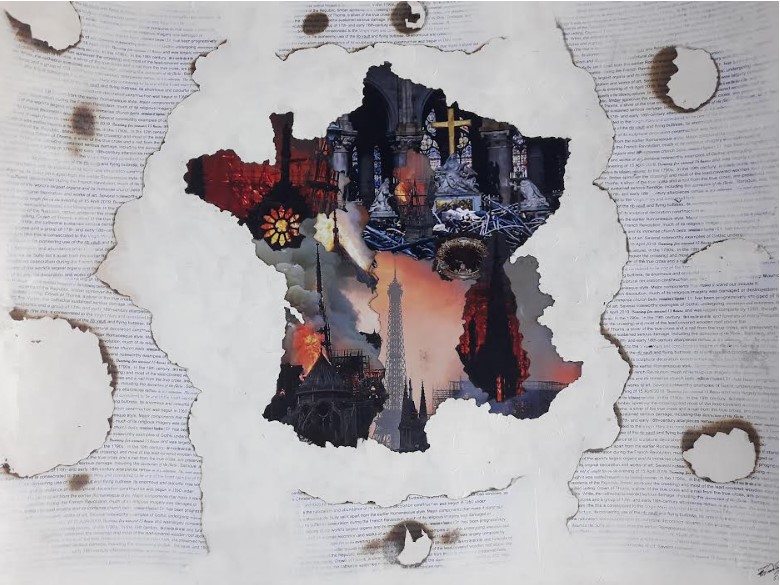
The other aspect of my displacement experience involves my identity as a Tamil. Here I am specifically referring to the early 1990s. The situation in Sri Lanka is a lot different now. In the 1990s Tamils were regarded as suspicious or potentially dangerous characters. Most young Tamils were regarded as terrorist until proved otherwise. This attitude prevailed right across the Sinhala population. I’m not blaming or accusing the Sinhala people for such an attitude. This was an inevitable result of the ethnic war. Mutual suspicion was the norm of the day amongst both Sinhala and Tamil communities. The media was mainly responsible for creating such paranoia amongst both communities. This was not an unfounded paranoia. The atrocities carried out by the extremist and the armed forces and the situation created by the introduction of Prevention of Terrorism Act (PTA), which placed all Tamils in a vulnerable state legally, created an insecure and suspicious mindset among both the communities. Though some remnants of this situation still lingers on, the situation now is very different compared to that of the 1990s.
This anxiety created by the displacement and the scars and trauma created by the war trauma continues to be embodied in my artworks. These issues manifest in various forms, such as questions of identity, meaning of religious faith, meaning of society and culture, and so on. Incidences related to these issues motivate me to express my feelings and ideas through various types of art forms. I would not call what triggers me to paint or do a work of art as inspiration; rather, I regard these as momentary experiences that makes a mental impression which necessitates artistic expression.
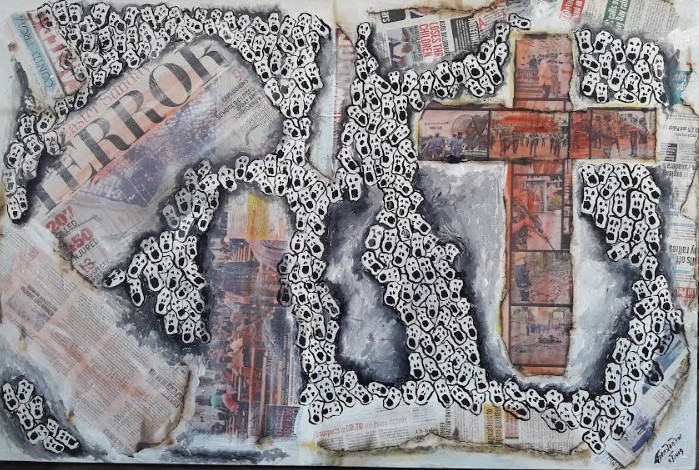
What art projects are you working on currently? What is your inspiration or motivation for this?
GRC: I would not like to categorize my art activities into “projects”. Because project connotes an artificially planed activity, the execution of which necessitates production of art. I would rather like to term my “periods“ of artistic output as preoccupations. Preoccupation is a mental state, a compulsion where you repeatedly think about an idea or situation which compels one to create artworks that emerge out of that situation.
I am presently preoccupied with the idea of camouflage. The word ‘camouflage’ is used to indicate a visual illusion, which makes an animal or a person to blend with the environment. This idea can be extended to politics and the socio-cultural context as well. For example, an ethno-religious hegemonistic attitude can be promoted under the banner of culture or democratic politics. Everyone sees the visible picture at the initial glance; it takes a while and often “subjugate experience” to decipher what is hidden behind.
Contemporary art has become very diverse and multidisciplinary in the last few decades. Do you welcome this trend? Is this trend part of your art practice?
GRC: Contemporary art practice involves use of various modalities such as multimedia, installation, performance, printed material, and so on. When ideas overwhelm us, we need to look for appropriate forms and media to express ourselves. When I was preoccupied with the idea of identity I found painting was very restrictive and was inadequate to express myself. I chose performance art at this point as my mode of expression.
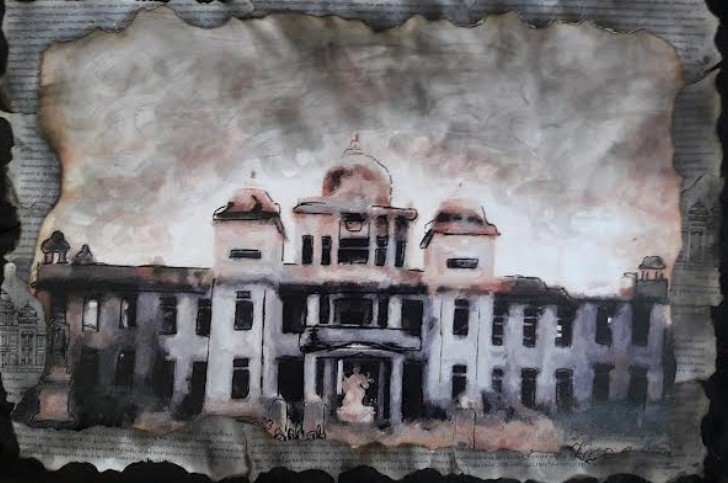
To illustrate this let me elaborate on my performance art that focussed on “identity”. My understanding of identity is basically performing a pre-existing script. I felt this very strongly when I first moved to Colombo. This prototype identity script is created mainly by the media as I mentioned above. In my “Identity” performance I covered myself with newspaper to show that you don’t see me but you see what the media has scripted about a “Tamil” person. This idea of identity cannot be brought out in painting. So I use technology and other forms of expression when the conventional media are not suitable or restrictive.
Does art have a social purpose or is it more about self-expression?
GRC: This is an intriguing question. Humans are social animals. Whatever we are is what the society has made us to be. So even self-expression is also part of what society has made us to reflect upon or express. In that sense self-reflection is a commentary on society, which has a social purpose. In my view all artworks directly or indirectly serve a social purpose. For example, my performance on the issue of identity is self-expression in the way I experience my identity evolving in an alien society; at the same time it’s a reflection on how society formulates generic identity based on scripts created by the media rather than real interaction with individuals. So self-reflection has a social purpose but needs to be “read” at a different level.
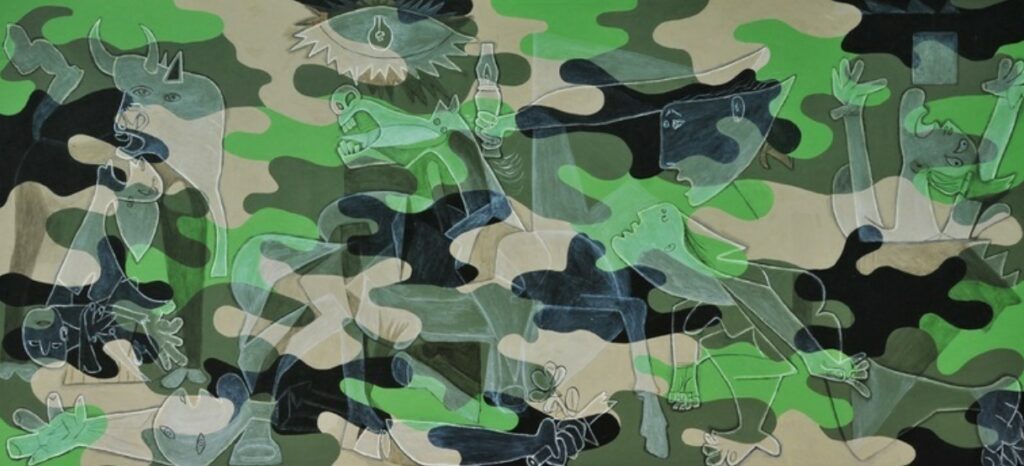
Where do you create you’re art (workplace/studio)? What is your process?
GRC: For me reading, writing, thinking and doing artwork are interrelated activities. Thinking about ideas and situations lead to artwork or writing, an expression of some sort. Reading sharpens our thinking. I like to keep these activities physically close together also.
I work in my study area. This environment facilitates this mutual influence on reading, writing, thinking and doing artwork. When I am preoccupied with an idea, either I write down my thougts or discuss my idea with others. By doing so I’ve experienced that my idea broadens and my focus gets sharpened. Just thinking about an idea leads to stagnation. Writing though, controlled by the brain, often helps in the flow of thought and further evolves the ideation, which cannot be achieved by thinking alone. This leads to using new techniques, new media and even different forms of expression.
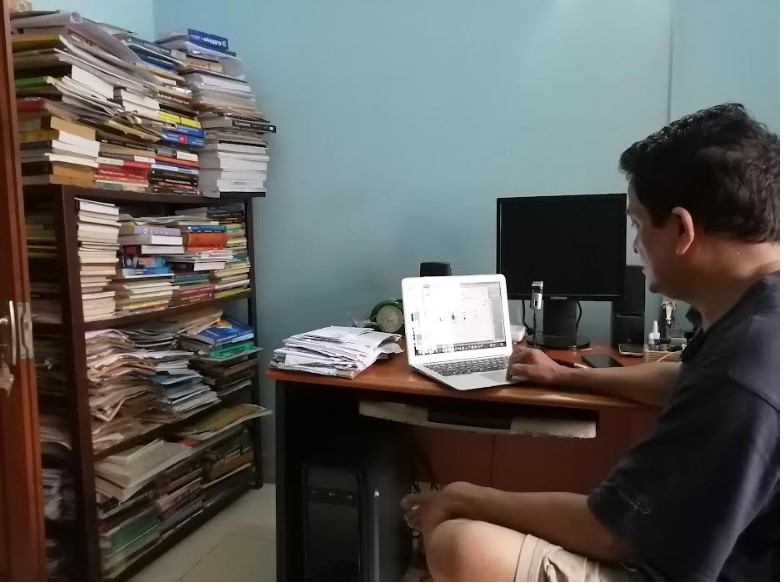
To what extent will the world of art change in the post-Covid period – both in terms of what is created as also the business of art?
GRC: The Covid pandemic had different effects on different art forms. In the beginning we thought that the lockdown would provide us ample personal time to think, work and may be reorganize our activities and endeavour into new ventures. But later, this time taught me that an artist cannot work in isolation. Art creation is a by-product of social interaction. Personally, my activities slowed down a lot during the lockdown. Even if I regard my work as personal reflection, it gains meaning and is enhanced by social interaction, which inspires me.
In certain ways the Covid situation brought us together. I interacted more often with many of my friends abroad and had frequent Zoom meetings (at least at the beginning). We had more Zoom performance art sessions than during the pre-Covid period. I made new friends and new connections. Yes, the Covid pandemic had its positive and negative effects. However, I’m sure things will fall back to where they were once the pandemic comes under control.
Tell us about any other interest you may have besides your art practice. Does it get reflected in your art?
GRC: Treating patients is what I do for a living; engaging in art is what I do to experience the wholeness of life. One is very subjective the other is very objective. Treating patients and seeing positive outcomes always satisfies me. The negative, though rare, carries greater pain than the pleasure obtained from positive outcomes. For me this is more measurable and has very a transient affect.
But, as an artist when I create an artwork which in my opinion communicates or has come out well gives contentment that is immeasurable and long lasting in that it is available for appreciation by others. There can be negative comments for an artwork, but that does not mean negative results. (I always wonder how many artists have been fully understood during their productive lifetime.) I feel the sense of achievement only when I complete an artwork and when it’s appreciated by people whom I hold in high regard, such as art connoisseurs.
Then, I also like philosophy, sociology and literature. Philosophy is fascinating in that it makes you think about the core issues in life and life’s purpose.. I started systematically studying philosophy when I was in England for my postgraduate training and enrolled for an external degree BA course in philosophy at the University of London. I was deeply impressed by Descartes’s “I think, therefore I am”. That was the opening sentence in my first lesson. Now I mostly concentrate on aesthetic philosophy.
My interest in sociology is to understand the structure of society and how it functions. I systematically studied sociology along with mass media and economics at the Open University of Sri Lanka. Sociology helped me to realize how human being are moulded according to the requirements of the social structure. Though we think about ourselves as being unique, we are mostly playing various roles in our day-to-day life depending on the social context. Our outward success depends on how well we play the assigned role in a given context. The reference model is already there. This idea is the base for my work on identity. Whatever we do on a day-to-day basis is tied with an identity. Our whole life is a performance, while our identity gives meaning to our performance. In fact, our identity itself is a performance and life is the ultimate performance.
I’ve been interested in literature, mainly drama and poetry, right from my school days and did an MA in Tamil literature from the University of Madras as an external student. Studying ancient to modern literature showed me how life and thinking has changed through history. We can see a drastic change in the way of thinking and living during the colonial period. The ancient Tamil poetry, the “Sangam Poetry”, illustrates how life was intertwined with nature during that period. With the colonial influence our value system has completely changed. This change is not due to anyone’s fault, but due to the changes in our education system and our values. Though ancient literature shows us how life and nature were inter-dependent, the colonial influences divorced our lives from nature. The most important change that took place was with regard to our idea of development and progress. With the influence of westernized thinking we now regard that progress and advancement can only be achieved at the expense of nature.
This is evident in the way we have aligned ourselves with the western models of progress. Even if you take literature, the contents and mode of presentation of contemporary literature emulate western trends. This I see as a paradigm shift, a basic shift of the philosophy of life. Now I am preoccupied with the human- nature conflict and how it could be interpreted in art.
These diverse interests help me to refine my thinking and my artistic output. It is important for artists to have wide interests and involvements to enhance their understanding of life and their creative thinking.
(All images are courtesy of the artist, Godwin Constantine.)
For similar articles, join our Telegram channel for the latest updates. – click here





























































